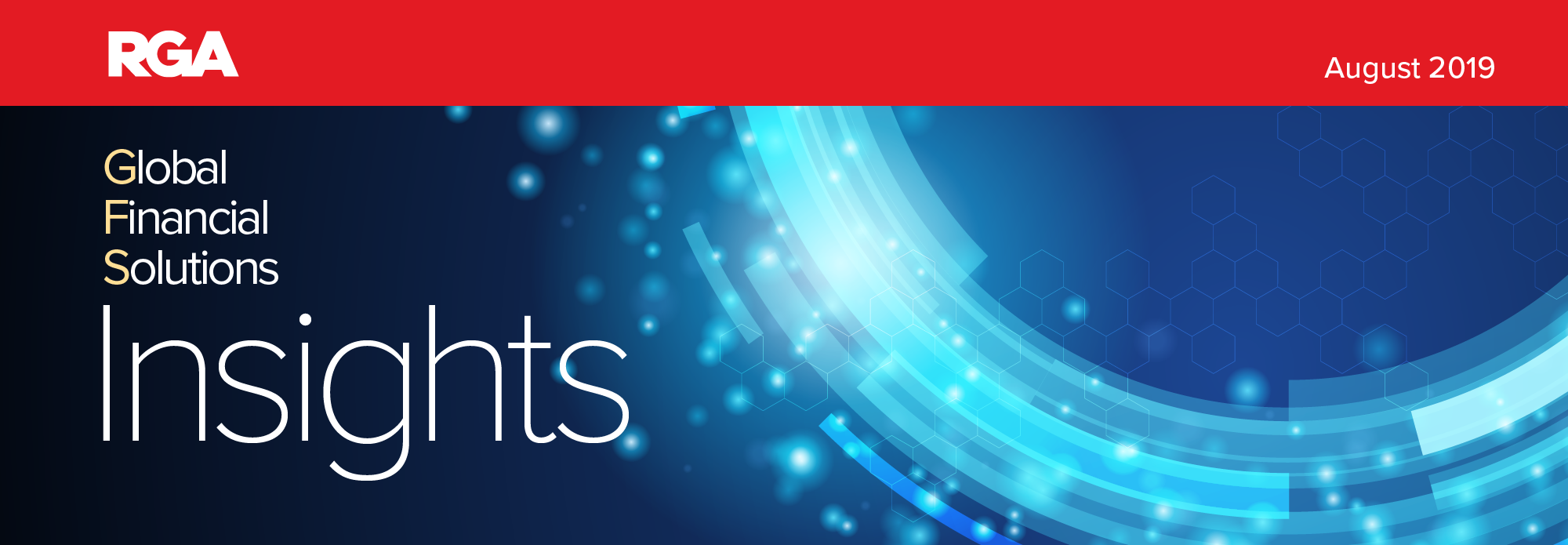
A Conversation with Mitchell Schepps of Aon
Recently RGA’s David Addison, Senior Vice President, Business Development for Global Financial Solutions, and Mitchell Schepps, Senior Managing Director at Aon, had a discussion about the U.S. annuity reinsurance market. Mitchell is a Senior Managing Director within Aon’s Reinsurance Solutions business. He provides accident, health and life clients with risk transfer solutions, data and analytic services, and capital management strategies to improve clients’ performance and reduce volatility. Mitchell has over 30 years of reinsurance experience collaborating with life insurance clients to structure and place efficient reinsurance transactions. Prior to joining Aon in 1999, Mitchell served as the Regional Vice President at Cologne Life Re for 14 years. He assists life and health insurance companies in using reinsurance as an effective financial management tool.
What follows is a condensed and edited version of their conversation, focusing on Mitchell’s insights and observations about the current annuity environment from a broker’s perspective.
As you look at recent activity in the annuity reinsurance market, what trends have you noticed?
Recently we have seen more companies interested in legacy in-force transactions as well as new business reinsurance transactions. As a firm we are bullish on the legacy in-force market and anticipate more transactions to be completed in 2019.
On legacy in-force transactions, we are seeing some of the smaller to medium-sized cedants reaching out to firms like ours to try to reduce execution risk and achieve better treaty terms. On new business, we are seeing more interest from clients looking to reinsure their fixed annuity and multi-year guarantee annuity (MYGA) products rather than indexed annuity products, with the goal of increasing their minimum guaranteed rate on the products. The good news is that these products seem to be simpler and faster to market so there will be continued appetite.
How much does the current interest rate environment enter into conversations with clients who are considering transacting on their legacy in-force blocks?
Interest rates enter into the conversation quite frequently with our clients who are looking to cede their blocks of business. In the past few years, many companies held the view that interest rates were on the rise and that they could wait until interest rates reached a level where they could achieve the spreads they were looking for on their product. However, because higher interest rates have not materialized, and many companies no longer expect interest rates to rise anytime soon, there is increased pressure to find an annuity reinsurance solution for those products.
However, one tail wind is that because interest rates have actually fallen, the negative ceding commission – that is, the amount in excess of the policy reserves that would need to be transferred from the cedant to the reinsurer – required to sell a block to the market has actually increased. Some companies that a year ago could have done a break-even trade (no ceding commission) would now need to pay a negative ceding commission. For some companies, that is an obstacle to completing a transaction. We have looked at a lot of blocks which will not trade in the market because the ceding company will not accept a negative ceding commission.
What other considerations do companies typically take into account when contemplating a transaction?
Companies will typically consider their current excess capital position; if they have a lot of excess capital with no direct use for the capital to be freed up from a transaction, they may hold off on bringing a legacy block to market. Companies will also consider the impact on their regulators and rating agencies. For example, if a company is viewed as overweight on interest rate or another risk class, it may believe a transaction to realign their balance sheet would be viewed positively by regulators and rating agencies regardless of their current capital position.

What do you see as the advantages to your clients of working with a full-service broker such as Aon?
At Aon, we deliver reinsurance intermediary services and beyond. We do a lot of work up front to help companies understand what their legacy blocks of business look like and what the current market might accept. We typically assist clients in comparing the benefits of full divesture versus reinsurance and assist with rating agency discussions, pro-forma financial statement analysis, and consult on accounting treatment. We can also assist with treaty review and treaty negotiations with the reinsurer. We view providing a broad range of services as part of our job in meeting our clients’ needs.
The market for legacy in-force business, especially where the reinsurer has the ability to direct or manage the asset portfolio, appears to be increasingly competitive, particularly with offshore reinsurers. Where have you seen these new entrants looking to compete, and what has the reaction been from your clients?
We see the number of counterparties continuing to increase, and we frequently hear of new companies trying to raise between $100 million and $1 billion of capital. Most of these companies seem to be chasing fixed deferred annuities and fixed indexed annuities, given the large supply of those products in the market. Although not much has been done in the market to date, we also hear continued interest in long term care transactions. Most of the new entrants have different asset strategies, with the pitch that 80% of the investment portfolio will look similar to the cedant’s strategy while the remaining 20% is allocated to their specific strategy. Their pitch is to let them do what they do best and pass some of the economics on to the cedant.
We’ve seen limited success with these strategies because our clients are typically conservative and value assets in trust, a strong reinsurer balance sheet, and execution certainty. There are a lot of counterparties in the market but only a few that can meet those three requirements.
At RGA we view our counterparty strength as one of our key differentiators. How do your clients think about the value of a strong counterparty compared to trust provisions? Do you see any willingness from your clients to look at less than 100% of assets held in trust for a reinsurer that is a strong counterparty?
In my experience cedants still appreciate the value of a reinsurer posting assets in a comfort trust but have gotten more sophisticated in their views on counterparties. If given the option to trade with a new entrant with assets in trust, or trade with a firm like RGA with a rating and a strong balance sheet, I think many cedants would choose the stronger counterparty. We have not seen many trades in the market with new entrants.
We do see some willingness and interest from our clients in reducing the amount of collateral for a strong counterparty. That discussion is largely driven by how the improved economics on the ceding commission compares to the reduction in collateral provided by the reinsurer. To date, we have seen most companies opt for worse economics and stronger collateral.
One situation where companies may be interested in the reinsurer holding less than 100% of assets in trust is where doing so would result in a positive or break-even ceding commission. With interest rates now dropping, this option may be attractive to cedants that wish to avoid the optics of having a negative ceding commission.
Lastly, how important is deal execution certainty to your clients?
Aon’s view is that this is an extremely underrated risk and one where Aon spends a lot of time with our clients. We provide a great deal of advice to our clients on the degree of execution risk for a transaction given the nature of each counterparty the client is involving in the sales process.